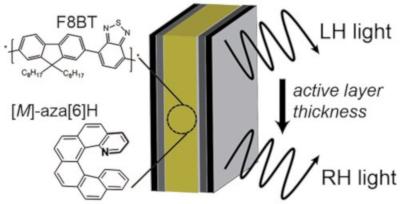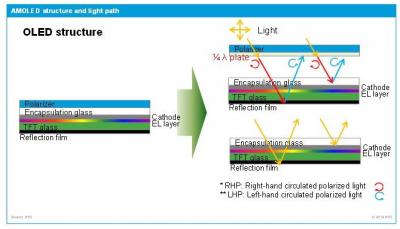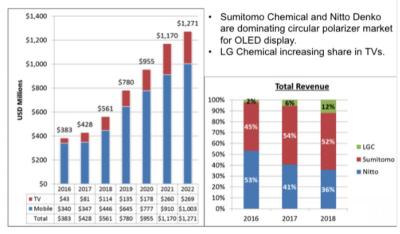Researchers from the Imperial College London developed a new class of PLED materials that exhibit circularly polarized luminescence. Basically this means that the new materials emit polarized light which could make for more efficient Polymer-OLED devices as none of the light will be blocked by the external anti-glare circular polarizer added to the display.

In 2013 researchers from the ICL has reported they are researching the usage of Helicenes as emitter materials in PLED devices that also emit circularly polarized light - the researchers termed these devices CP-OLED (Circularly-Polarized OLED). Helicenes materials are thermally-stable polycyclic aromatics with helically-shaped molecules.
In 2017 it was reported that Samsung is developing an AMOLED display without a circular polarizer. A polarizer film adds to the thickness of the display (and to the cost) - and it also absorbs some of the light and so reduces the power efficiency and the brightness of the display. It is not clear how Samsung aims to produce a non-polarizer OLED.
 DSCC says that the OLED circular polarizer market is set to grow from $428 million in 2017 to $1.27 billion in 2022. The market is still dominated by mobile displays.
DSCC says that the OLED circular polarizer market is set to grow from $428 million in 2017 to $1.27 billion in 2022. The market is still dominated by mobile displays.

The OLED circular polarizer market is led by two companies, Sumitomo Chemical and Nitto Denko, with LG Chem increasing its market share in OLED TVs polarizers.

